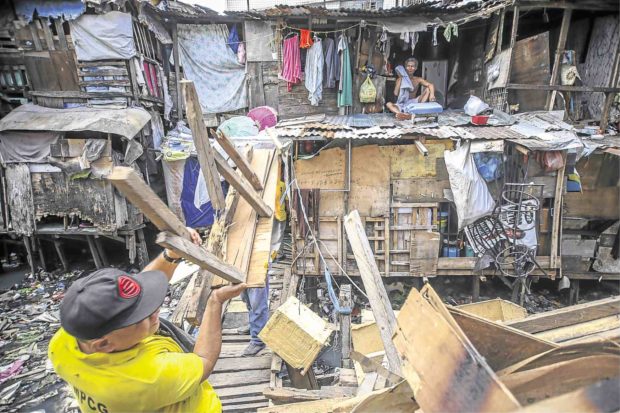40 At-risk families living near Tondo estero relocated

CLEANUP CAMPAIGNMMDA personnel start demolishing shanties on the banks of Estero de Magdalena, one of the tributaries of the Pasig River. —EARVIN PERIAS
At least 40 informal settler families living on the banks of a trash-choked estero in Tondo, Manila, were relocated on Tuesday to Cavite province as part of government efforts to clean up one of the most polluted waterways linked to the Pasig River.
Estero de Magdalena, a kilometer-long narrow creek running beneath multistory shanties in the back alleys of Tondo, is currently home to around 1,000 families who use the tributary as a dump.
It is one of the priorities of the Pasig River Rehabilitation Commission (PRRC) and Metropolitan Manila Development Authority which are working to clear and rehabilitate the 25-km Pasig River.
Traffic solution
Long thought to be biologically dead, the river is now being eyed by the government as one of the solutions to the traffic problem in the metropolis.
But to help improve the current river ferry service, authorities must first clear the river banks of informal settlers, as at least 70 percent of the trash found in the waterway was domestic—human waste, garbage and compost, said PRRC public information officer George dela Rama.
The 40 families relocated on Tuesday was the first batch, to be followed by 60 families next week.
Unlike most relocation efforts—often met with resistance from residents who fear losing their livelihood—a lot of the families interviewed by the Inquirer were in favor of moving to Trece Martires.
Nelieta Quillo, 41, however, was worried that her two kids, both in high school, might not be able to continue their education as there was no school near the relocation site.
She said they would have to commute back and forth for now, a move which would cost them P280 a day.
It’s the same situation faced by Heideliza Marquez, 50, whose children are also studying in Tondo.
Perilous living conditions
But the living conditions in the estero—fetid, decaying and perilous—are what convinced them to move, they said.
While the demolition of the structures on the estero are underway, it may take a while before all 5,000 residents are relocated, said Bong Nebrija, MMDA head of operations.
This was due to the limited number of available housing units being provided by the National Housing Authority.
Still, there was an urgent need for residents to move since their shanties were a hazard while the estero was a breeding ground for diseases, Dela Rama said.